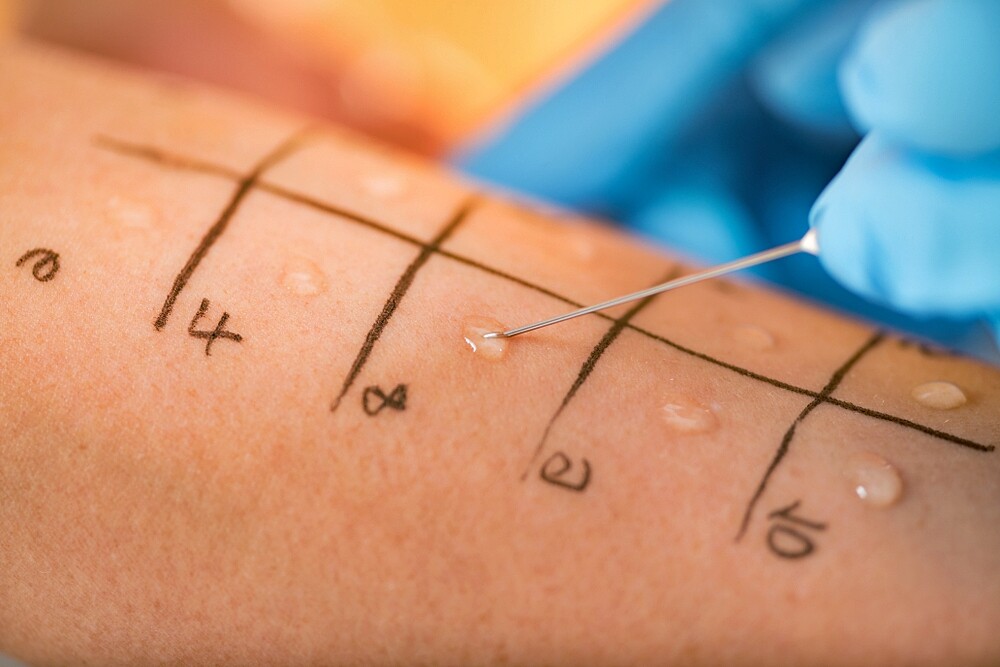A prick test can be used to diagnose a possible allergy. Here you can find out how the test is carried out and what costs may arise.
What’s the prick test?
A prick test is an allergy test that allows you to find out quickly and easily whether someone is sensitive to a particular allergen. The prick test is suitable for identifying type I allergies, the so-called immediate type. This includes around 90 percent of all those affected. The word “prick” comes from the English language and means “prick” or “sting”, which refers to the way the test is carried out.
When should I have a prick test performed?
If there is a suspicion of an allergy, the allergy test is the first choice. The standard test includes between 15 and 20 different allergy triggers, including allergens from pollen allergy (e.g. hay fever), house dust allergy, animal allergens such as cat allergy or mould spores. If a more unusual allergy is suspected, these can also be detected by allergy tests.
How does the prick test go?
A great advantage of the prick test is that it can be carried out on an outpatient basis and you don’t have to wait for the results of a laboratory test afterwards. Any doctor who has experience with allergy treatments can carry it out.
Allergen-containing test solutions are dripped onto the patient’s skin (usually on the inside of the forearm). The doctor then scars the skin with a prick lancet or needle. This is how the solutions enter the body. If there is a sensitization or an allergy, the so-called mast cells of the immune system react to it by showing allergy symptoms such as:
- Redness
- Quadling
- Itching
There are known cases where the skin test has led to a life-threatening allergic shock (anaphylaxis). However, this happens very rarely.
In addition, a so-called negative control and a positive control are performed. The positive control contains histamine – the messenger substance should always lead to a skin reaction such as a wheal (by the way, there is also a histamine intolerance) The negative control contains saline solution, which should not cause a reaction.
After only 15 to 20 minutes the prick test can be evaluated. On the basis of the symptoms that have occurred, the doctor can easily assess whether an allergy is present. The strength of the allergic reaction can also be used to determine how severe the allergy is.
What are the costs of the pricktest?
The costs are calculated according to the number of test solutions used. As this is a standard procedure for allergy detection, the costs are covered by the health insurance companies.
What other skin tests are there?
In addition to the prick test, there is also an intradermal test, which is considered to be more sensitive than the prick test for certain allergens, but is also somewhat more complex. On the other hand, there is the epicutaneous test – this is a provocation test that is used to detect late allergies. Late allergies include allergic reactions that occur with a significant time delay after contact with an allergen.

